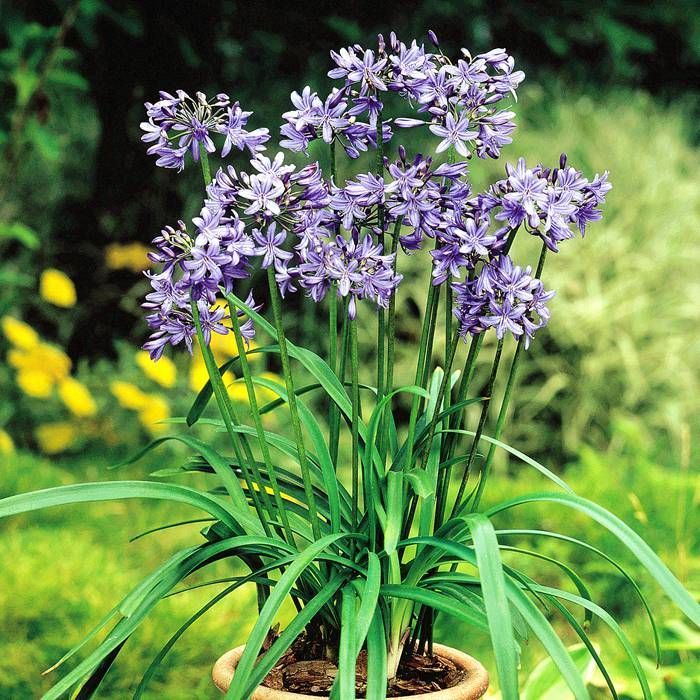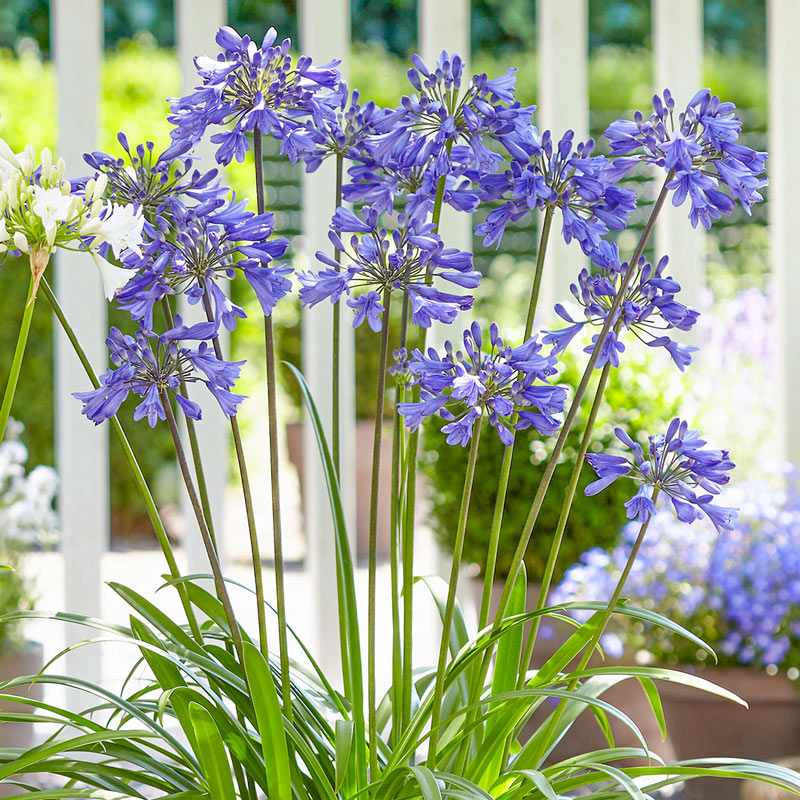Mastering the Art of Agapanthus Treatment: Important Actions for Healthy Development and Dynamic Flowers
In the world of gardening, the cultivation of agapanthus stands as a fulfilling undertaking for those who seek to support these classy blooming plants. With their striking blooms and graceful vegetation, agapanthus has recorded the interest of gardeners worldwide. Nonetheless, attaining optimal growth and lively blossoms calls for a nuanced technique that includes different important steps. From picking the ideal variety to mastering pruning methods, the trip towards cultivating prospering agapanthus plants is diverse and holds the essential to opening the complete potential of these organic treasures.

Picking the Right Agapanthus Selection

When choosing the appropriate Agapanthus variety for your yard, take into consideration aspects such as climate suitability, bloom color, and growth behavior. Agapanthus, frequently called Lily of the Nile or African lily, can be found in a variety of shades varying from tones of purple and blue to white. Choose a flower color that enhances your existing garden combination to produce an unified landscape. In addition, think about the environment in your area to ensure the Agapanthus range you pick can thrive in your certain problems. Some varieties are extra tolerant of cold temperature levels, while others like warmer environments. Comprehending the development behavior of various Agapanthus selections is crucial for correct placement within your yard. Some selections have a clumping development routine, ideal for containers or boundaries, while others have an even more spreading nature, ideal for ground cover or mass plantings. By thoroughly assessing these factors, you can pick the ideal Agapanthus variety to improve the charm of your yard.
Ideal Growing Problems
Taking into consideration the optimal ecological needs is vital for effective Agapanthus growing. Agapanthus thrives in well-draining soil with a slightly acidic to neutral pH degree. When growing, choose an area that obtains full sunlight to partial shade. In hotter climates, offering some mid-day color can stop scorching of the leaves. Agapanthus plants are delicate to chilly temperatures and ought to be secured from frost during cold weather.
To guarantee healthy and balanced development and dynamic blossoms, plant Agapanthus bulbs at a deepness of about 2-4 inches and area them 8-12 inches apart. Including raw material, such as garden compost, to the soil can boost drain and fertility, promoting durable origin advancement. Mulching around the base of the plants helps maintain moisture and reduces weed growth. Routine watering is crucial, particularly throughout the expanding period, to keep the dirt consistently moist however not waterlogged.
Watering and Fertilizing Tips
Keeping proper wetness degrees and giving essential nutrients are vital aspects in the treatment program for Agapanthus plants. When it comes to sprinkling Agapanthus, it is essential to strike an equilibrium. These plants favor regularly wet dirt however are vulnerable to root rot if overwatered.
Fertilizing Agapanthus is important for advertising healthy growth and respected flowers. Apply a balanced plant food, such as a 10-10-10 formula, in the early springtime as new development emerges. By adhering to these watering and fertilizing ideas, you can ensure your Agapanthus plants grow and produce lively, resilient blossoms.
Pruning Methods for Agapanthus
Pruning Agapanthus plants at the appropriate times and with Going Here correct methods is essential for preserving their health and promoting optimal growth and blooming. The perfect time to prune Agapanthus is in late winter season or early spring prior to brand-new development arises.
For flowered stems, wait till the blooms have actually withered and after that cut them back to the base. This not only cleans the plant's look yet additionally urges the development of brand-new blossom buds. Deadheading invested blossoms can likewise redirect the plant's power right into creating even more blooms instead than setting seeds. Nevertheless, if you desire to gather seeds for proliferation, leave some flowers to dry and mature on the plant.
Bear in mind to use view website clean, sharp tools to make accurate cuts and minimize the danger of introducing diseases. Agapanthus. Routine trimming will help maintain your Agapanthus looking neat and healthy and balanced while guaranteeing a plentiful display screen of gorgeous blossoms
Managing Common Bugs and Illness
After guaranteeing correct trimming methods for Agapanthus, it is necessary to attend to common insects and illness that can impact the wellness and vigor of these plants. Agapanthus plants are generally durable yet can still fall target to specific problems. One typical insect that impacts Agapanthus is the Agapanthus gall midge. This small, orange fly lays its eggs in the foliage, bring about distorted growth and flower buds that fail to open. To battle this pest, trim and destroy any kind of affected plant parts and think about using insecticidal soap.
An additional typical issue is fungal fallen leave area, which provides as dark sores on the leaves. To avoid fungal illness, ensure good air circulation around the plants, stay clear of overhanging watering, and get rid of any type of infected leaves promptly. In addition, Agapanthus plants can experience origin rot if they are planted in poorly draining pipes soil. To stop this, plant Agapanthus in well-draining dirt and stay clear of overwatering. By being attentive and taking prompt activity versus diseases and bugs, you can help your Agapanthus plants thrive and produce vivid blooms.

Conclusion
Finally, understanding the art of agapanthus treatment includes choosing the right range, supplying excellent planting problems, correct watering and feeding, proper trimming strategies, and attending to typical insects and diseases. By adhering to these crucial steps, you can make sure healthy growth and lively blooms for your agapanthus plants. Keep in mind to on a regular basis keep track of and maintain your plants to promote their total health and longevity.
To ensure healthy and balanced development and vivid blooms, plant Agapanthus bulbs at a deepness of about 2-4 inches and space them 8-12 inches apart. By following these watering and fertilizing tips, you can guarantee your Agapanthus plants flourish and generate dynamic, resilient blossoms.
One look at here typical insect that impacts Agapanthus is the Agapanthus gall midge. In addition, Agapanthus plants can experience from root rot if they are planted in badly draining pipes dirt. By complying with these necessary steps, you can make certain healthy and balanced growth and dynamic blossoms for your agapanthus plants.